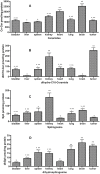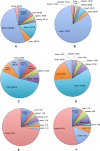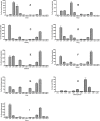Bioactive sphingolipid profile in a xenograft mouse model of head and neck squamous cell carcinoma
- PMID: 31002723
- PMCID: PMC6474618
- DOI: 10.1371/journal.pone.0215770
Bioactive sphingolipid profile in a xenograft mouse model of head and neck squamous cell carcinoma
Abstract
The purpose of this study was to determine the profile of bioactive sphingolipids in xenograft mouse tissues of head and neck squamous cell carcinoma. We utilized UHPLC-MS/MS to determine the profile of full set of ceramides, sphingosine, and sphingosine 1-phosphate in this xenograft mouse model. The tissues isolated and investigated were from brain, lung, heart, liver, spleen, kidney, bladder, tumors and blood. With the exception of equal volume of blood plasma (100ul), all tissues were studied with the same amount of protein (800ug). Results demonstrated that brain contained the highest level of ceramide and kidney had the highest level of sphingosine, whereas sphingosine 1-phosphate and dihydrosphingosine 1-phosphate were heavily presented in the blood. Brain also comprised the highest level of phospholipids. As for the species, several ceramides, usually present in very low amounts in cultured tumor cells, showed relatively high levels in certain tissues. This study highlights levels of bioactive sphingolipids profiles in xenograft mouse model of head and neck squamous cell carcinoma, and provides resources to investigate potential therapeutic targets and biomarkers that target bioactive sphingolipids metabolism pathways.
Conflict of interest statement
The authors have declared that no competing interests exist.
Figures




References
-
- Cuvillier O. Sphingosine in apoptosis signaling. Biochim Biophys Acta 2002; 1585 (2–3): 153–62. . - PubMed
Publication types
MeSH terms
Substances
Grants and funding
LinkOut - more resources
Full Text Sources
Medical
Research Materials

